May not forget about astronomy
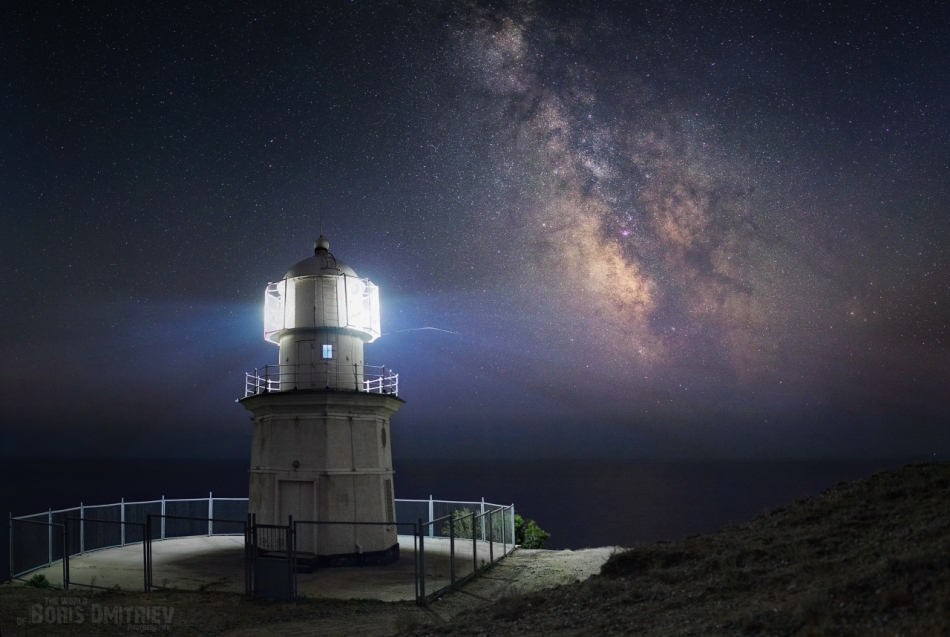
I hope you didn’t spend all your energy on the first May holidays. Because this month there will be a lot of interesting things in the sky - the passage of Mercury across the solar disk, the opposition of Mars, astronomical and meteorological phenomena.
Maximum flow eta-aquaria
On the night of May 6, there was a maximum of this meteor shower — Aquaria. But do not get upset - this beautiful meteor shower has a wide maximum and remains active until May 28. Moreover, it is better to watch it in the morning, away from the city. It is a new moon, and the moon will not interfere with its light.
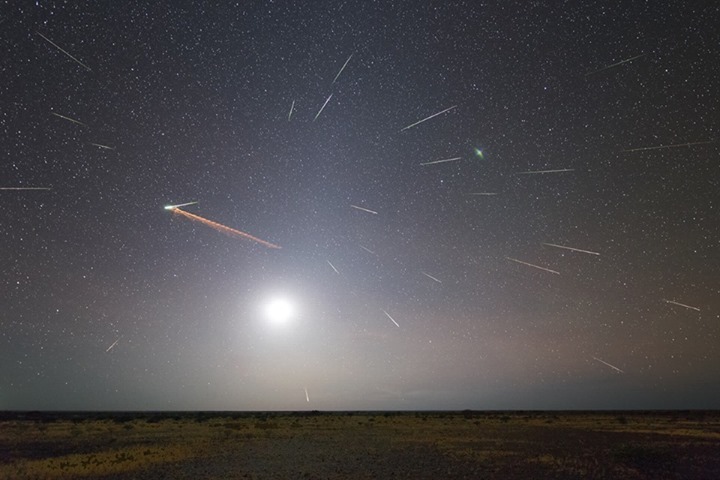
This 2013 Aquaria in Australia. Marked mark in the center of a brighter meteor
The passage of Mercury across the disk of the Sun on May 9
This year there will be a not very frequent astronomical event - Mercury will pass between the Sun and the Earth in such a way that it will be observed against the background of the solar disk. This phenomenon is less common than eclipses, but much more often than the passage of Venus across the solar disk. Russia is lucky - we will be able to observe the beginning of the passage, except for the Far East regions (they were lucky last time, in 2006), and the residents of Murmansk will be able to see it entirely. The passage will begin at 14:11 MSK:
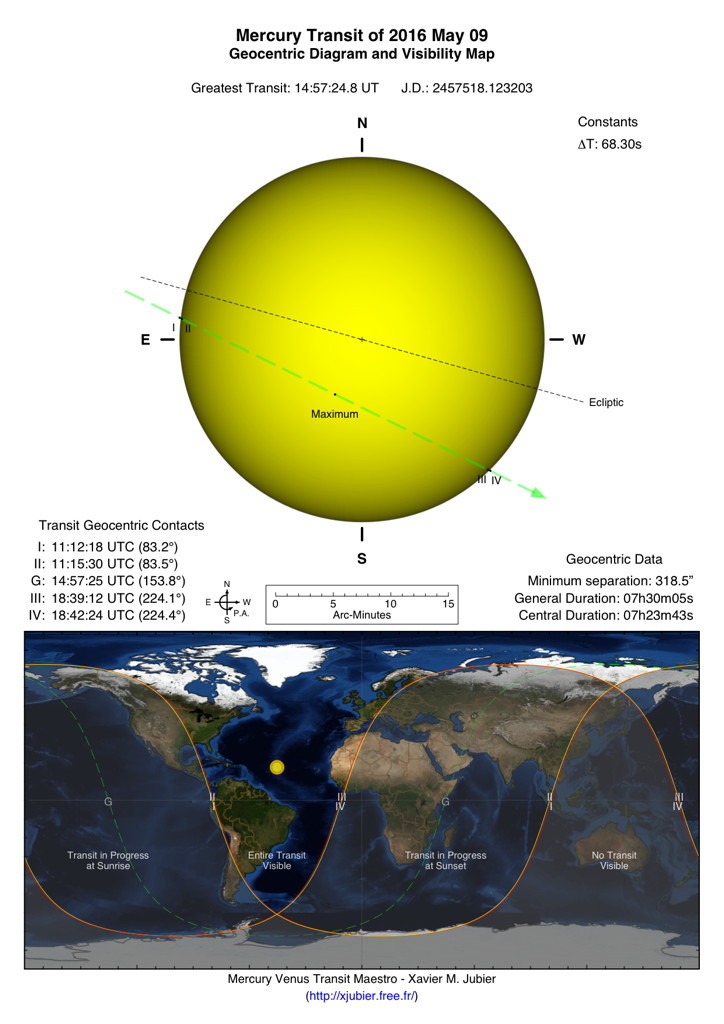
')
There is an interactive map on which you can see the visibility and travel time for your location.
ATTENTION: When observing the Sun, take precautions. Passage can be safely observed by making a pinhole camera , looking at the Sun through a diskette or a CD / DVD disc, a welder's mask or smoked glass. When using a telescope, an image can be safely projected onto a screen or use special aperture filters on a telescope lens. The use of self-made filters on the telescope eyepiece or observation in optical devices without filters is absolutely unacceptable!
Mars confrontation
May 31 at 23:50 Moscow Time, raise your eyes to the southern part of the sky. There will be visible Mars, which will be at a distance of only 0.5 astronomical units. He, of course, will not look like the second moon, but with the naked eye three bright stars will be visible not far from each other - Mars, Saturn and Antares.
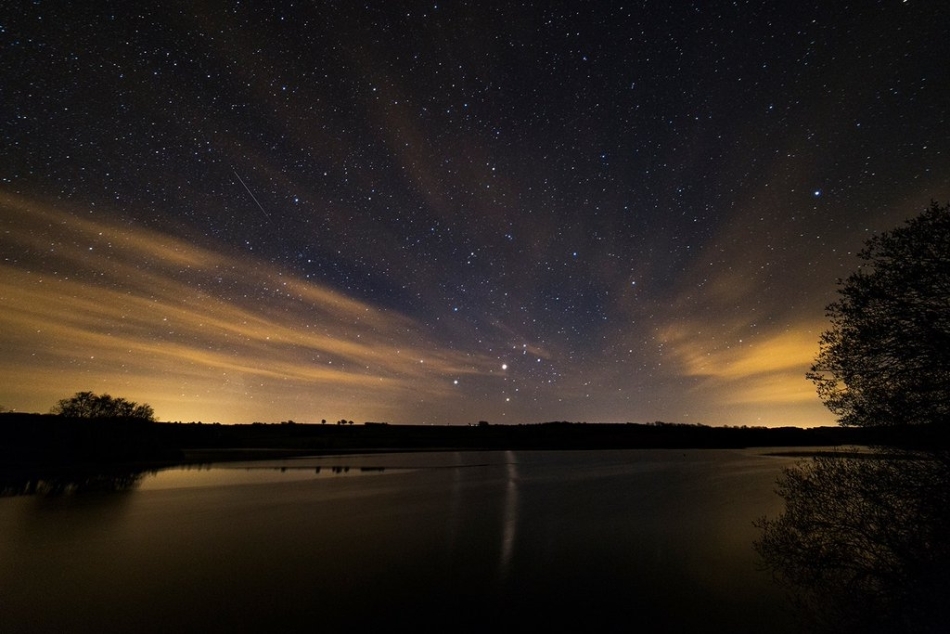
Mars will be on the top right, Saturn on the left, and Antares below, and he will be the only one of the three to twinkle.
But in this picture, which you could already see, it means the minimum distance to the Sun, so the date is different - May 22. Below the moon for scale.

Halo
Despite the fact that the halo is seen mainly in the winter, if you are attentive and successful, you can still catch this beautiful phenomenon. For example, a halo in Ufa on April 25:
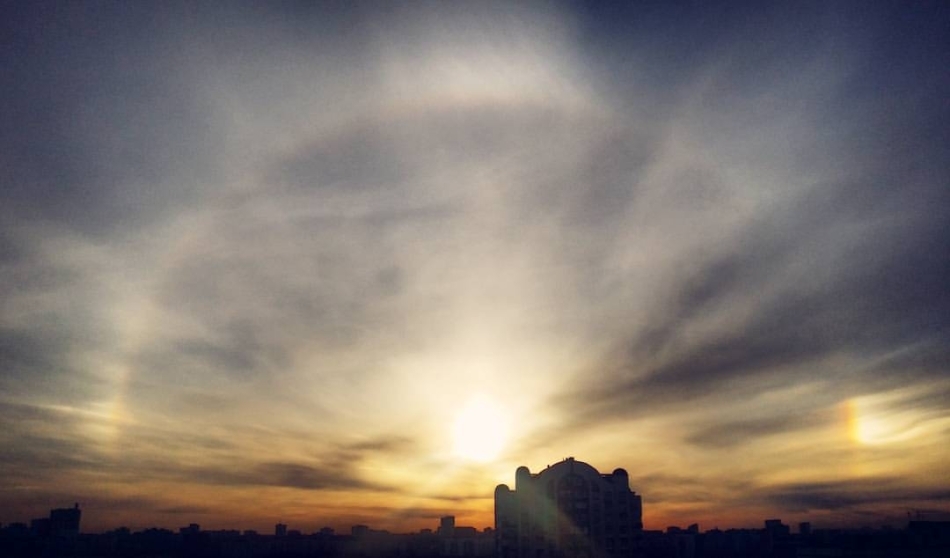
Noctilucent clouds
In May, the season of visibility of noctilucent clouds in high latitudes begins. Practically all over Russia after sunset there are chances to see such beauty here:
Additional materials
A simple guide to the May sky, I wrote in 2014.
Do not be lazy and put on your smartphone planetarium software. For Android, there are free planetariums: a great Star Chart and the heavens-above.com site app.
The publication used photographs of the Astroforum section “Astrophotography” and a photograph of the Ufa halo of the user Orange Flute.
Source: https://habr.com/ru/post/372193/
All Articles